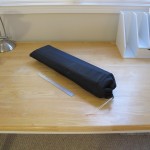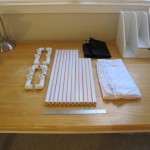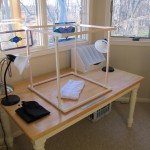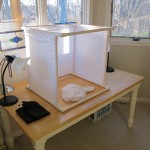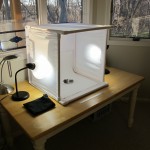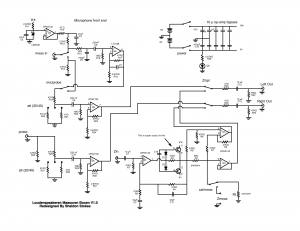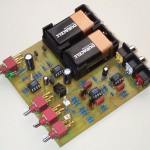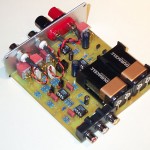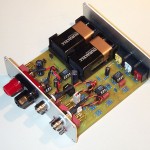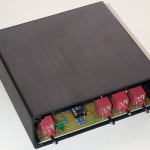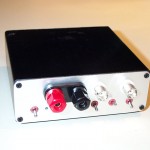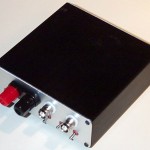My wife has been lampworking glass beads and is starting to sell her wares. In order to take pictures of her handiwork, I needed a good way to illuminate the small glass artwork. There are many plans for simple lightboxes based on cardboard boxes on the web, but I just can’t bring myself to build any tool that I’m going to use for more than a few minutes out of cardboard. So I built one out of 1/2″ PVC pipe and some stretchy white nearly swimsuit material. The whole thing breaks down and stows into a canvas bag that I sewed for the purpose. The box is sized to accept 22″ wide posterboard without cutting to act as a seamless background. I light the box with a pair of 100 watt daylight compact fluorescent bulbs in desk lamps. The total cost of the light box is about $12.
Archive for March 16th, 2010
I’ve been building speakers for myself and others as well as repairing Quad Electrostatic speakers for nearly twenty years. A couple of my designs are shown on my website, as well as instructions and descriptions of how to repair the Quad ESLs. One key tool needed in speaker design and repair is the ability to measure the speakers acoustical response. I have used Loudspeaker Lab to measure passive components, driver TS parameters, and speaker impulse response and sweeps. Lately I’ve been using Fuzzmeasure on my Mac, which is a nice and simple package, and works well. But nothing works exactly like you like to work except software you write yourself. I have a complete passive component measuring, Driver TS parameter calculating, and speaker impulse and sweep response measuring suite written in LabView. I’ll be posting a description of my software suite and lots of screenshots soon.
Regardless of the software used, a good microphone pre-amplifier is needed. In 2002, I designed a measurement bridge loosely based on the Loudspeaker Lab box. The controls were designed to match the Loudspeaker Lab box, and my measurement box contains a lot of the same functionality, but in a higher performance, more battery hungry version. The measurement box contains a low noise wide bandwidth microphone pre-amp, an amplified impedance bridge, and an extra channel of buffering for amplifier compensation when measuring speakers. In addition, I have a built in reference resistor (0.005%) to calibrate the impedance bridge.
This bridge allows me to measure and match crossover components (caps, resistors and inductors), measure driver Thiele-Small parameters (Delta Mass), and measure speakers; both impulse response (MLS based), and in-room sweeps. I use this measurement box in conjunction with Panasonic WM-61A electret microphones.
Here is the schematic for my measurement bridge:
And here’s a few pictures of the measurement box itself. It loves to eat 9V batteries:

